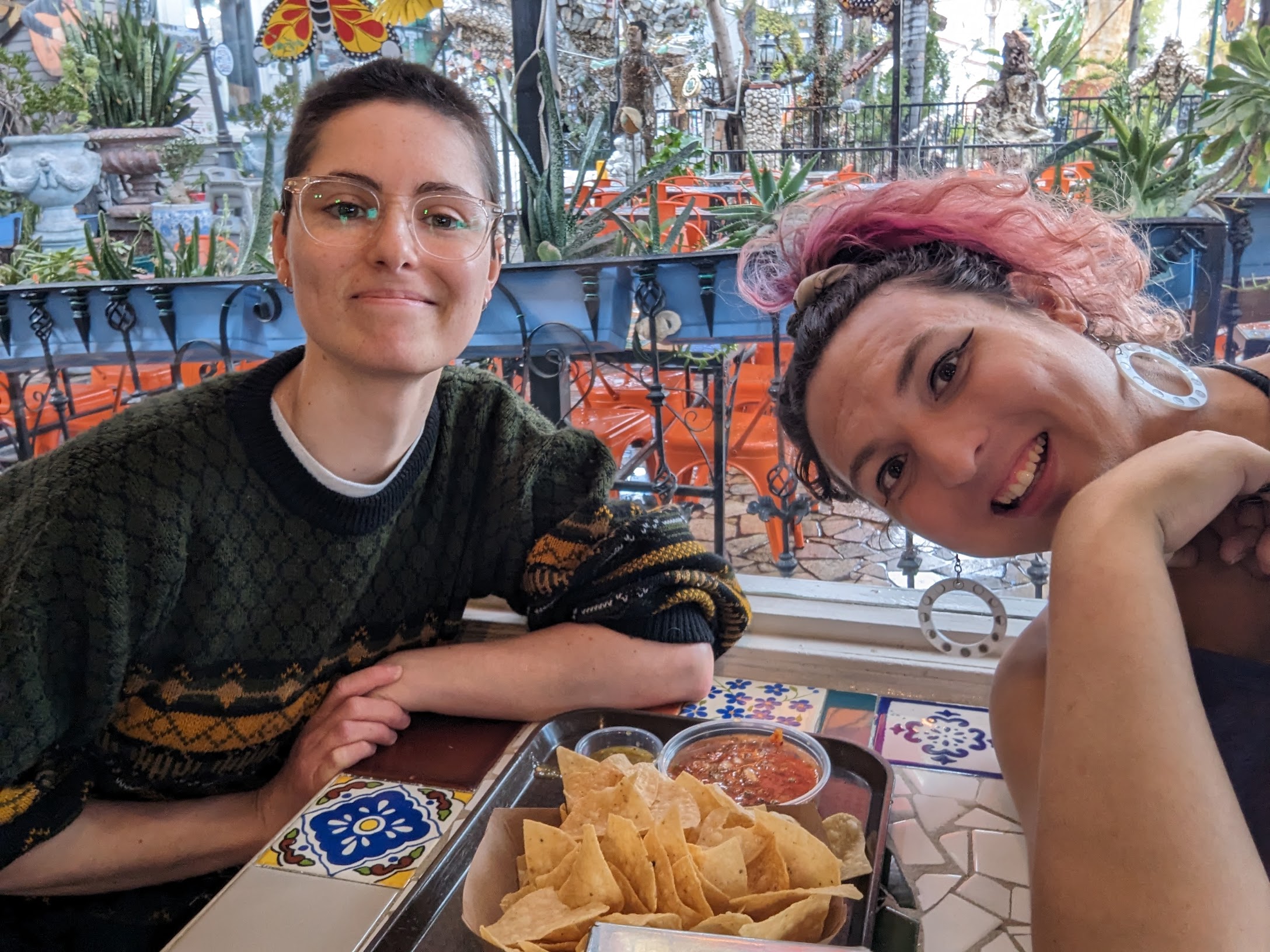A Cute Application of the Yoneda Lemma
17 Mar 2025
Every few weeks recently I’ve been putting a new fun problem on one of the whiteboards in the first year office. These are often inspired by something I saw on MSE, and I’m usually choosing problems that force you to understand something fundamental really well. Then I usually have a “challenge” bonus problem that uses the same ideas, but requires you to do some independent research to finish the puzzle! I’ve just decided what the next problem is going to be, and I’m going to post about it here because I think it’s too cute to not share more widely! This is also going to serve as a nice excuse to talk about some important reasons to care about yoneda and representability that I don’t think we often tell beginners!
Before we start, though, some quick life updates: I’m still waiting to hear back positively from postdocs, but there’s still plenty of departments where I’d be very happy. I’m trying to not stress out until the end of april. What’s more stressful is my actual dissertation – because we had to move everything up a year, I didn’t have as much time as I expected to solve my main problem, and while I solved some very simple thing that’s needed along the way… It’s really not a very good thesis, haha. So I’m trying really hard to finish the whole problem in the time I have, and we’ll see how I manage. My mental health has been pretty hit or miss with the *gestures at the state of the world*, but I’m doing what I can where I can to help, and that’s been good for what would otherwise be an overwhelming sense of helplessness. I know everyone is feeling some amount of this, especially in the queer and trans community, and I encourage everyone to find something actionable to do on a local level – it helps the community, and it really does help keep the feelings manageable.
BUT, enough about all that! I haven’t been writing much because I’ve been so focused on research, and I’ve really missed posting here. The quicker I am the more likely I’ll find time to do it again, so let’s get to the fun part!
I’m going to assume that most people reading my blog have at least heard of the Yoneda Lemma. But it’s possible that some people reading this are confused as to why you might care about it. Like, what does it buy you? How does it help prove theorems? One answer is that it’s foundational for thinking about the functor of points approach to lots of subjects, which tells you how to study things like stacks, etc. Said in a different way, it’s an extremely useful perspective for studying certain moduli problems – you can see my old blog post about this here if you’re interested.
But that’s all quite high powered. Is there a more concrete reason to care about yoneda? The answer here is inspired by one of Terry Tao’s old blog posts – the yoneda lemma tells you how to understand polymorphic transformations between two constructions (which are a priori complicated) by just studying regular old functions between representing objects!
For one version of this, say you want to understand
cohomology operations. That is, say you want to understand when
there’s a map on cohomology
Now we know that
Which, by representability, is a natural transformation
but now we finally get to use yoneda! These natural transformations are exactly the same thing as ordinary continuous functions (up to homotopy)
This means if we can understand all continuous functions between these
fixed spaces, that’s enough to understand all cohomology operations
That’s well and good…. But surely that can’t be the “down to earth” example, right? Cohomology operations are interesting, and might eventually feel down to earth, but objectively most people would laugh at that idea. This, finally, brings us to the problem I’ll be writing on the first year’s whiteboard later today:
Let
- Classify all “polymorphic” functions
If
- (Challenge) Classify all “polymorphic” (set) functions
I’m about to spoil both of these problems, so if you want to think about them (and I really encourage you to think about them! At least the first problem!) now is your last chance to be unbiased by my explanation…

Ok, so. Inspired by the rest of this post you’ll want to think about how to
represent the constructions above. For the first problem, where we
want set functions
- the functor sending a ring
- the functor sending a ring
The second one isn’t so hard to do – a moment’s thought shows that
ring homs
So classifying “polymorphic” transformations
which, by yoneda, is asking to classifying good old fashioned ring homs
and, as before, we just need to decide where
It’s not hard to see that any such polynomial gives you such a natural map!
Indeed, for a concrete example take
If one thought about this problem without knowing category theory, I think
it would be pretty easy to conjecture that integer polynomials are the only
polymorphic maps
Now… what about the challenge problem? We want to classify “polymorphic” maps
Again we have a natural5 conjecture, since if we have a group homomorphism
Well, a “
is the same as classifying natural transformations
which, by yoneda, means classifying ring maps
and thus means classifying
Now is where the independent research comes in. You might naively guess that
the group of units in
We want to understand the group of units in
This paper is only 6 pages long, and is a very polite read7. Part (2) of their Theorem 1 is exactly what we’re looking for:
(2) … there are
conjugacy classes of elements of order , with generic elements and respectively.
What does this mean for us? Their Part (1) to this same theorem gives an
isomorphism of
Indeed from this we’ve learned that our naive conjecture was wrong!
This element
If
Or, said another way, if
is a (probably surprising!)
Of course, as with the last problem, I’m not sure how you would even begin to approach this classification problem without rediscovering the relevant version of the yoneda lemma!
Thanks again for hanging out, everyone! I’m working on a lot of really fun stuff and I can’t wait to have time to talk about it. I think I want a quick outro today – I’ve had the sniffles all weekend, probably because I didn’t dress well before hanging out in the cold with one of my best friends who visited me last week! We made creme brulee for the first time (since I recently bought a blowtorch), and it was surprisingly easy and turned out delicious! I already make a lot of lava cakes when I want a decadent and fancy dessert, but I’ll have to add creme brulee into the rotation!


Talk soon, everyone! Stay warm 💖
-
This “polymorphism” (which, of course, corresponds to naturality) is because we want an operation that’s really coming from the cohomology rather than being an “accidental” operation that comes from structure on
-
Like I did… about a decade ago… I realized when writing this post that I remember waiting for many of these Bartosz Milewski posts to be published! But these posts have been done since 2017. Wild. ↩
-
I was so close to making “spectra” in this sentence link to spectra instead, which I think would be hilarious, but I decided against it. ↩
-
Some pedants might prefer I say corepresent. This footnote is purely to indicate that I do know better, I just don’t care, haha. ↩
-
Pun very much intended ↩
-
I forget exactly when I learned that the units in
and there’s no reason to suspect this unit is an isomorphism! Most units aren’t, haha. ↩
-
Though you have to get over the “function application on the right” notation, which goes totally unmentioned and confused me for a second when I read it.
Functions on the right is absolutely objectively the better notation, and unfortunately it’s just confusing enough when you aren’t used to it to make it so that it’s unlikely to ever really catch on. ↩